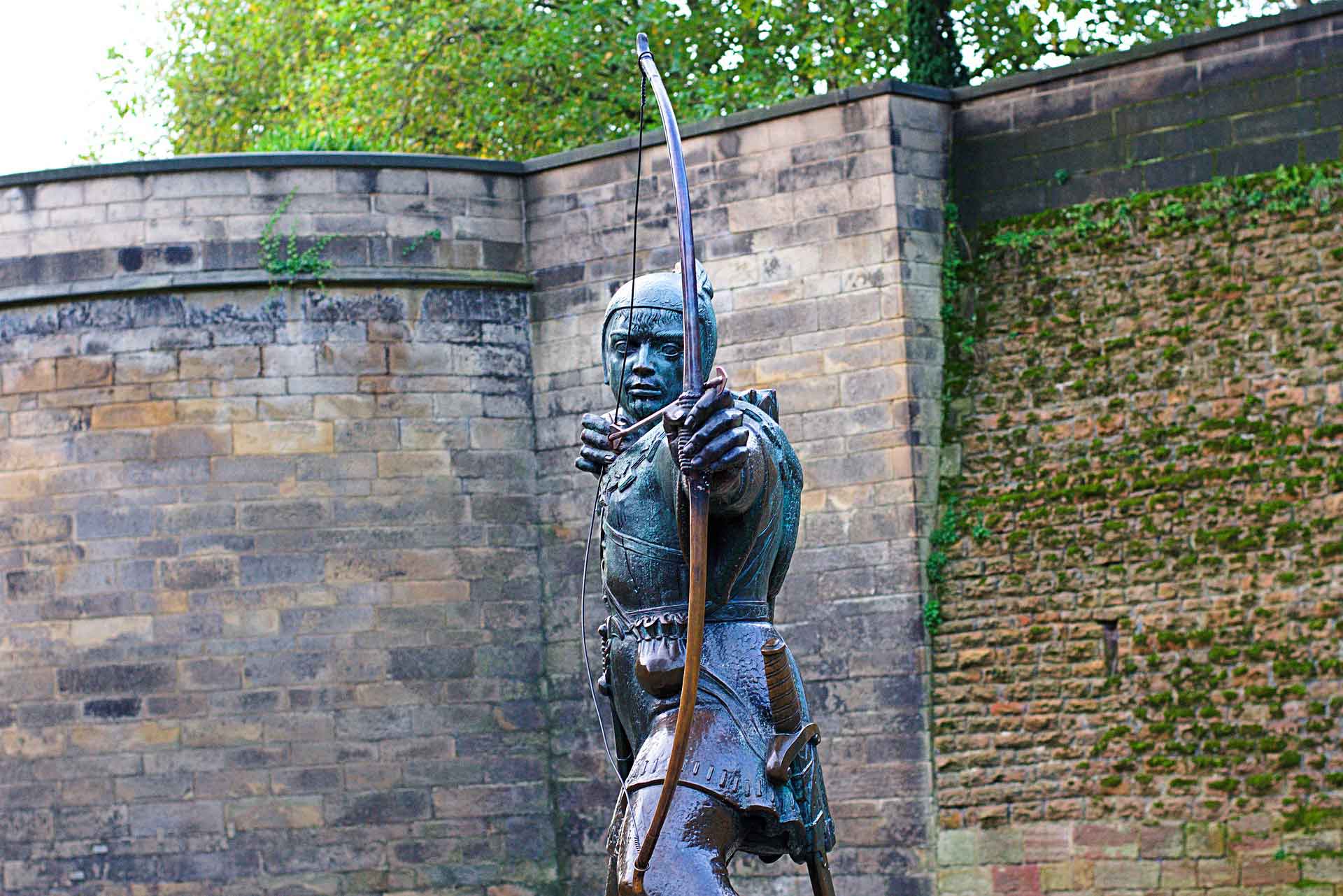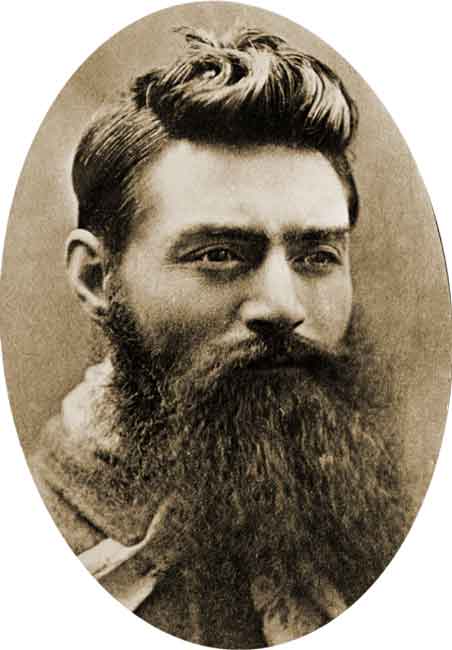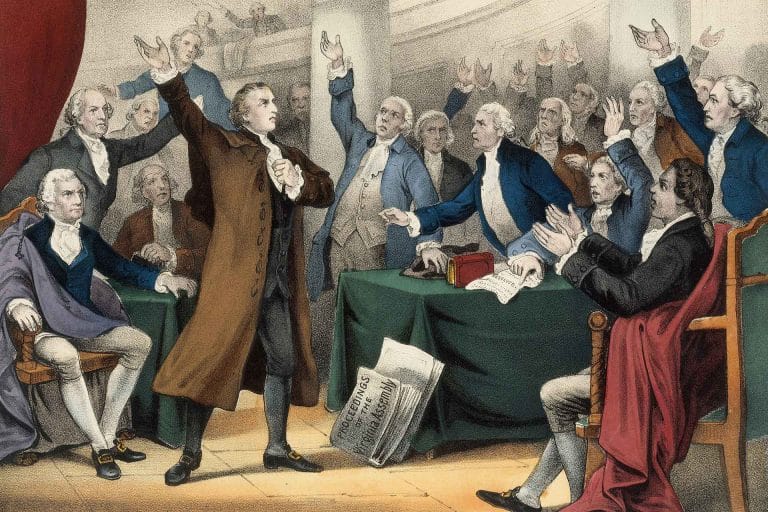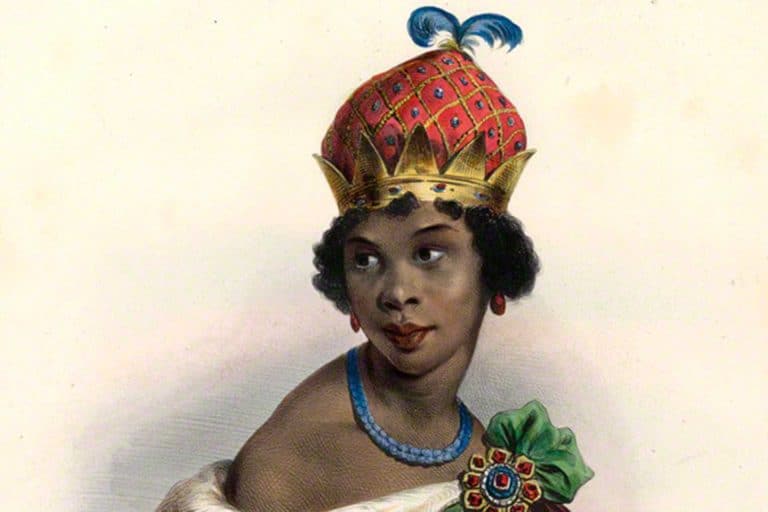15 Historic Outlaws and Their Timeless Quests for Justice
Countless individuals have been painted as historic outlaws and rebels, not because they harbored ill intent or a thirst for chaos, but because they defied oppressive systems to champion the cause of justice. From Sherwood’s dense forests to the high seas, legends of these outlaws echo tales woven with threads of courage, resistance, and an undying quest for righteousness.
This list dives into the gripping stories of 15 such iconic figures who, driven by perceived injustices, transformed into legendary outlaws. While operating outside the laws of their time, these renegades forged their legacies by standing firm against tyranny and fighting for a world more just than the one they inherited.

Robin Hood: The Archetypal Historic Outlaw
Emerging from the leafy enclaves of Sherwood Forest, Robin Hood stands as perhaps the most enduring figure among historical outlaws. The very mention of his name conjures images of a skilled archer draped in Lincoln green, relentlessly defending the downtrodden against the oppressive elite. Legends portray him as a nobleman who lost his lands and status, being branded an outlaw because he chose to defy the cruel Sheriff of Nottingham and a corrupt monarchy. Driven by a vision of justice and equity, Robin Hood, alongside his band of Merry Men, boldly engaged in acts of rebellion, redistributing wealth from the affluent to the impoverished.
The lines between myth and fact blur when dissecting the origins and existence of Robin Hood—records from the medieval era reference individuals bearing his name or closely related monikers. However, definitively linking these figures to the legend that’s been cultivated over centuries remains a challenging endeavor. Some scholars argue that Robin could’ve been an alias adopted by multiple rebels over time, each contributing to the lore we recognize today.
As for the fate of this legendary figure, it varies across different retellings. While some tales recount his heroic death during a skirmish, others narrate a peaceful end surrounded by his loyal followers. Regardless of his fate, Robin Hood’s legacy is undeniable. He embodies the spirit of standing against oppression and advocating for the voiceless. Centuries later, the tale of Robin Hood continues to inspire countless adaptations, movies, and books, a testament to humanity’s enduring admiration for historic outlaws who dare to challenge the status quo and champion justice.

Rob Roy MacGregor: Scotland’s Outlaw for Justice
Born at the dawn of the 18th century, Robert MacGregor, better known as Rob Roy, emerged as a figure whose life was intertwined with Scotland’s complex politics and social struggles. As the chief of the MacGregor clan, he initially took on the traditional role of a cattleman. However, the landscape of his life dramatically shifted due to an unfortunate financial entanglement. MacGregor borrowed a significant amount intending to expand his cattle herd, but disaster struck when his chief herder, trusted with the loan money, vanished. This resulted in MacGregor defaulting on his substantial loan.
Consequently, he was declared an outlaw, and the gravity of this situation escalated when his wife and family were ruthlessly evicted from their home in Inversnaid, which was subsequently torched. The Duke of Montrose, his principal creditor, intensified MacGregor’s anguish by seizing his lands. These acts ignited a profoundly personal feud, with MacGregor frequently raiding the Duke’s cattle and intercepting his rents in retaliation.
While the narrative above remains prevalent, another version paints a slightly different picture. It suggests that MacGregor’s estates of Craigrostan and Ardess faced forfeiture due to his involvement in the Jacobite rising of 1715. Further cementing his “historical outlaw” status, these lands eventually fell into the hands of the Duke of Montrose in 1720, acquired not through treachery but by an open purchase from the Commissioners of Enquiry.
Amidst this backdrop of financial disputes and personal vendettas, Rob Roy’s commitment to the Jacobite Rebellions further solidified his reputation. He steadfastly supported the Stuart claim to the British throne, challenging the Hanoverian ascension. Though these rebellions did not yield success, MacGregor’s dedication to the cause made him a hero to many Scots.
Despite numerous arrests, Rob Roy’s wily nature meant he frequently evaded capture and lived the latter part of his life in relative peace until he died in 1734. The tales of his resilience, honor, and rebellion against systemic injustices have immortalized him in Scottish folklore. His legacy, echoing through literature and films, remains a testament to the might of historic outlaws when standing against oppressive forces and elites.
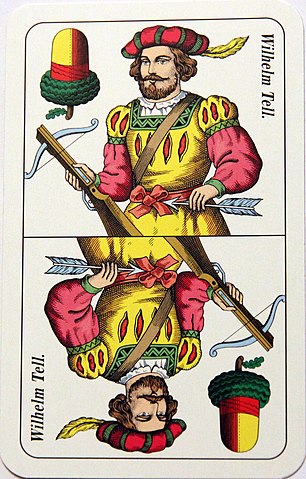
William Tell: The Archer of Swiss Legend
William Tell, an emblematic figure nestled within Swiss folklore, is a testament to the human spirit’s drive to resist oppression. While details surrounding his life blur the line between fact and fable, the essence of his story remains profoundly influential. This historical outlaw of the Swiss Alps is renowned for his unparalleled skill with a crossbow and, more notably, for his defiance against a tyrant.
The legend unfolds in the early 14th century in the town of Altdorf. Gessler, a cruel bailiff representing Habsburg overlords, set a hat atop a pole, demanding all townsfolk bow to it to symbolize their submission. Tell, either out of defiance or oversight, refused. As punishment, Gessler presented a sadistic challenge: Tell was to shoot an apple off his son’s head. With remarkable calm and precision, Tell successfully struck the apple, sparing his son’s life. However, Gessler noticed a second arrow concealed by Tell and inquired about its purpose. Tell’s ominous response, that it was meant for Gessler had he harmed his son, earned him immediate arrest.
While scant concrete historical records verify the exact events or even Tell’s existence, his story has been referenced in numerous chronicles, such as the “White Book of Sarnen,” written in the 15th century. The legend’s endurance suggests a deeper resonance with the Swiss psyche, reflecting their aspirations for autonomy and resistance against external dominion.
After his audacious act, Tell’s tale further narrates his escape from captivity and eventual assassination of Gessler. This act is said to spark a rebellion leading to Swiss independence from the Habsburgs. While the legend’s veracity remains debated, its influence is undeniable.
William Tell’s legacy transcends mere folklore. He remains an embodiment of Swiss national pride and an eternal symbol of resistance against tyranny. This historic outlaw’s story has been immortalized in operas, plays, and literature, notably Friedrich Schiller’s dramatic rendition in 1804. Through these mediums, the spirit of William Tell — a humble man pushed to heroic deeds against injustice — continues to inspire generations.
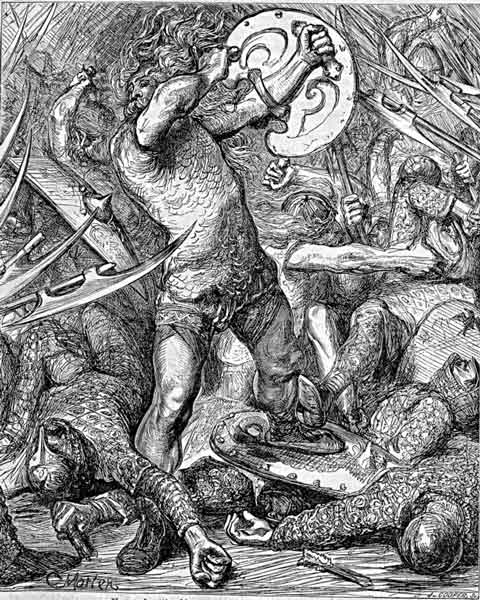
Hereward the Wake: England’s Fenland Rebel
Hereward the Wake, which translates to “Hereward the Watchful,” stands tall in English history as a symbol of resistance against Norman invaders. This historic outlaw from the 11th century is shrouded in mystery, with his tale oscillating between documented events and the realm of legend. Still, there’s no doubting the mark he left on English folklore as a stalwart defender against foreign rule.
Born into an Anglo-Saxon noble family, Hereward’s early life was punctuated with rebellious acts against his kin and local authorities, leading to his exile from England. However, the Norman Conquest of 1066 transformed him from a local troublemaker to a national hero.
Returning to his homeland, Hereward found it under the dominion of William the Conqueror. Incensed by the injustice of Norman rule and their oppressive actions, especially their treatment of the English nobility and peasantry, he mustered a band of committed fighters. He initiated a guerrilla war from the marshy terrains of the Fens in Eastern England.
Historical records, like the Gesta Herewardi — a semi-biographical account — highlight his rebellious activities, most notably his audacious act of raiding Peterborough Abbey in 1070 to prevent its treasures from falling into Norman hands. Collaborating with Danish invaders, he also orchestrated a siege against the Normans.
However, like all rebellions, it faced immense challenges. The might of the Norman forces eventually overwhelmed Hereward’s band, forcing them to retreat deeper into the Fens. While records of his final days are ambiguous, some suggest he made peace with the Normans, while others believe he continued his resistance until his tragic end.
Hereward the Wake’s legacy is rich and multifaceted. He metamorphosed into a legendary historic outlaw figure in the subsequent centuries, celebrated in ballads, chronicles, and novels. While the veracity of every tale associated with him might be debated, his essence remains undiminished as a beacon of resistance against oppression and foreign dominion. Through Hereward, the spirit of Anglo-Saxon defiance and the zeal for autonomy live on.
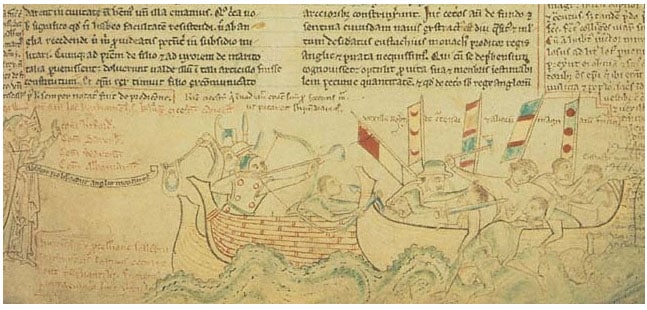
Eustace the Monk: The Enigmatic Pirate of the Channel
Eustace the Monk, whose tales are as mottled as the seas he once sailed, was a figure of contradictions. From a devout monk to a feared pirate, his life’s journey took him through starkly contrasting terrains. A historic outlaw in the truest sense, Eustace’s story is one of rebellion, piracy, and betrayal, making him an intriguing character of medieval European history.
Eustace began his life in a monastery in Boulogne, dedicating himself to a life of religious service. However, following a dispute whose nature remains obscured, Eustace was excommunicated and cast out from his order. This injustice and betrayal by his brethren propelled him down a path of revenge and banditry. He quickly transitioned from a man of the cloth to a rogue, using his detailed knowledge of the English Channel to become a fearsome pirate. He targeted vessels and seacoasts, amassing considerable wealth and notoriety.
His escapades, fraught with betrayal and shifting allegiances, are detailed in various historical records. Most notably, the Chronicle of the Exploits of Eustace the Monk provides an account of his tumultuous life, highlighting his multiple engagements with the French and English, as he played both sides according to his advantage. His alliance with King John of England made him a formidable foe for the French, but this association led to his eventual downfall.
During the Battle of Sandwich in 1217, amidst the turmoil of the First Barons’ War in which Eustace supported the rebelling barons, Eustace met his end. The English fleet captured his ship, and despite promises of amnesty, Eustace was executed and beheaded by those who once considered him an ally.
Eustace the Monk’s legacy is a tangled web of folklore and fact.
His transformation from a monk to a pirate has captured the imagination of many, leading to a slew of legends, ballads, and stories that portray him alternately as a black magician, a treacherous villain, and a hero wronged by fate. Through it all, Eustace remains a symbol of adaptability and resilience, proving that identities can be fluid, especially when forged in the fires of adversity.
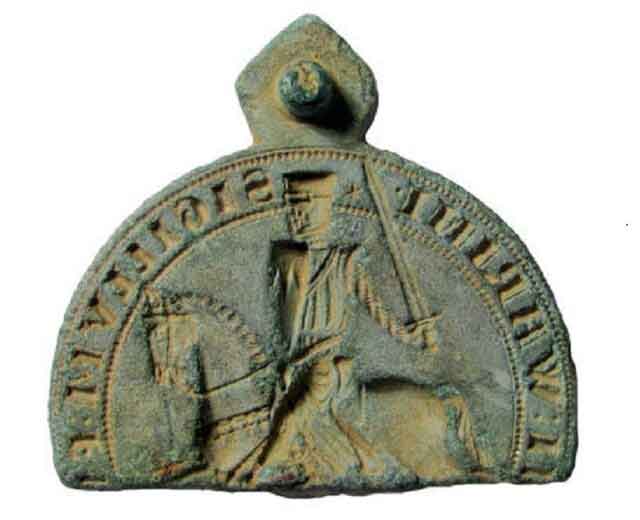
Fulk FitzWarin: The Defiant Baron of the Marches
In the chronicles of medieval England, few figures loom as large as Fulk FitzWarin, the nobleman who became a historic outlaw after a series of confrontations with King John. His story, woven with themes of defiance, justice, and rebellion, offers a compelling glimpse into the tensions and complexities of 12th and 13th-century English society.
Fulk FitzWarin III, often referred to as Fulk FitzWarin, was a Marcher Lord, a title denoting nobility in the border regions of Wales and England. His life took a turn for the dramatic when he got embroiled in a dispute with the future King John over the possession of Whittington Castle in Shropshire. The castle had historically belonged to the FitzWarin family, but King John, then a prince, took it for himself. This act of perceived injustice marked the beginning of Fulk’s rebellion against the crown.
One of the vital historical records that provides insight into his life is the Romance of Fulk FitzWarin, an Old French prose narrative. While part historical and part legend, the account details Fulk’s multiple confrontations with King John, his subsequent outlaw status, and his years living as a fugitive, often drawing parallels with the Robin Hood legends.
Ultimately, Fulk’s persistent resistance bore fruit. Under pressure and perhaps recognizing the strategic advantage of appeasing such a formidable foe, King John eventually returned Whittington Castle to Fulk. This restitution marked the end of Fulk’s life as an outlaw, allowing him to regain his noble status and live out his days in relative peace.
Fulk FitzWarin’s legacy is multifaceted. He is celebrated as a symbol of resistance against royal tyranny and a reminder of the often volatile relationship between the crown and the nobility during the medieval period. His tale, blending fact and fiction, has continued to inspire storytellers and historians alike, ensuring that the memory of this defiant baron remains alive in the tapestry of English history.

Götz von Berlichingen: The Iron-Handed Knight of Germany
Götz von Berlichingen is one of Germany’s most intriguing historical figures, often called Götz of the Iron Hand. A knight by profession and a historic outlaw by circumstance, his tale is one of resistance, audacity, and the perpetual struggle for justice during the tumultuous days of the Holy Roman Empire.
Born into an era defined by feuds and warfare among the Germanic territories, Götz carved a niche for himself as a fearless mercenary. However, his trajectory took a turn during a siege in 1504, where a cannonball injury forced the amputation of his right hand. Undeterred, he designed a prosthetic iron hand, a testament to his indomitable spirit and the advancements of the age.
Götz’s outlaw status was cemented after he kidnapped a rival, violating a peace treaty. This audacious act led to a ban on Imperial outlawry, effectively making him a target for anyone seeking a bounty. But Götz was not a man to be cowed. He continued his rebellious activities, even partaking in the German Peasants’ War in 1525, siding with the peasants against the oppressive ruling class.
Historical records, most notably his autobiographical account, provide a detailed picture of his adventures, skirmishes, and the intricate dynamics of German nobility and politics. These writings have gleaned much of what is known about this defiant knight.
Götz von Berlichingen’s legacy is twofold. For one, his indomitable spirit in the face of personal and political adversity has made him a symbol of resilience and defiance against oppression. Secondly, his life has inspired numerous adaptations, the most famous being Johann Wolfgang von Goethe’s drama “Götz von Berlichingen.” Through art, literature, and historical accounts, the tale of the iron-handed knight continues to captivate, serving as a potent reminder of the individual’s capacity to challenge and change the status quo.
Ned Kelly: Australia’s Legendary Bushranger
Born into a world of colonial hardship in 1854, Ned Kelly remains Australia’s most iconic bushranger and historic outlaw. With Irish ancestry and a family history marked by brushes with the law, Kelly’s fate seemed almost preordained amidst the rough justice and societal prejudices of 19th-century Australia.
Kelly faced a gauntlet of personal and systemic adversities from a young age. Like many Irish immigrants of the era, his family was often targeted by the British police force. As a result, he found himself entangled in a world of crime, starting with minor transgressions and escalating to bank robberies and confrontations with the police. His gang’s audacious crimes and distinctive armor became legendary, turning them into figures of fear and admiration. But behind the legend was a tale of injustice. The police frequently harassed the Kelly family, and a string of questionable arrests and alleged police misconduct further alienated Ned Kelly from the establishment.
Historical records, most notably the “Jerilderie Letter” penned by Kelly, shed light on his motivations and worldview. This 8,000-word manifesto, though dictated by Kelly, serves as a first-hand account of his life, the rationale behind his actions, and his perspective on the British colonial system’s mistreatment of his family and the wider Irish community.
Ned Kelly’s rebellious streak was destined for a tragic conclusion. In 1880, following a violent confrontation with the police at Glenrowan, Kelly was captured and subsequently tried. Despite a groundswell of public support and appeals for leniency, he was sentenced to death and hanged at Melbourne Gaol later that year.
Kelly’s legacy has been both polarizing and enduring. For some, he represents a criminal and a menace; for others, he’s a symbol of resistance against British oppression and an advocate for the oppressed. Over the years, his life has been immortalized in countless books, songs, and films. More than just an outlaw, Ned Kelly is a potent emblem of the Australian spirit: defiant, unyielding, and fiercely independent.

Lampião: Brazil’s Bandit King
Deep in the rugged terrains of Brazil’s Northeast, the legend of Virgulino Ferreira da Silva, better known as Lampião, took root and blossomed into one of the country’s most compelling tales of resistance and rebellion. Emerging in the early 20th century amidst widespread social unrest and stark economic disparities, Lampião became a historic outlaw, walking the line between a feared bandit and a revered folk hero.
Lampião’s path towards infamy began with a personal vendetta. After witnessing the unjust murder of his father by political rivals and police, he embarked on a life of crime, gathering a band of cangaceiros, or bandits, to exact revenge and challenge the established order. His group, including the fierce Maria Bonita, his partner in love and crime, raided towns, battled police forces, and defied the regional elites. They became symbols of resistance for many oppressed citizens, weary of corruption and longing for justice.
Historical records, including photographs, letters, and eyewitness testimonies, have painted a multifaceted image of Lampião. He was a cunning strategist, a lover of poetry, and had a flair for theatrics, often adorning himself and his gang with elaborate hats and attire. Simultaneously, his brutal methods and uncompromising nature made him a dread figure for many.
The reign of Brazil’s “King of Cangaço” met a violent end in 1938. A surprise police raid on their camp resulted in the deaths of Lampião, Maria Bonita, and several gang members. Their decapitated heads were displayed in public squares, a grim testament to the state’s intent to quash any semblance of rebellion.
Yet, in death, Lampião’s legacy only grew. Today, he is a potent symbol of resistance against perceived injustices and the unyielding spirit of the Northeastern Brazilian people. Songs, films, and literature celebrating his exploits continue to be produced, and for many, Lampião remains an embodiment of defiance against an often oppressive system.

Salvatore Giuliano: Sicily’s Robin Hood
In the hilly landscapes of post-World War II Sicily, a young man named Salvatore Giuliano was born into a backdrop of poverty, corruption, and political tumult. Born in Montelepre in 1922, Giuliano’s journey from a local peasant to a historic outlaw was marked by audacious exploits and a determination to stand up against what he saw as the injustices faced by his fellow Sicilians.
Giuliano’s path to notoriety began with a skirmish over grain smuggling, a then-common act borne out of economic desperation. After killing a police officer in self-defense, Giuliano was thrust into a life on the run, but his activities soon transcended personal survival. With his band of men, Giuliano raided wealthy landowners, distributed food and money to the poor, and even took on the local mafia and political establishment. His defiance of legitimate authorities and underworld figures earned him both admiration from the public and hatred from those in power.
Historical records, including police archives, journalistic accounts, and personal letters, sketch a picture of a complex figure. Giuliano was at once a ruthless bandit responsible for several violent acts and a charismatic leader celebrated for his acts of generosity. In particular, the 1947 Portella della Ginestra massacre, where several innocent laborers and their families were gunned down during a May Day celebration, remains a darkly controversial episode associated with his name.
In 1950, Salvatore Giuliano’s life was cut short under mysterious circumstances. Officially, he was killed in a gunfight with the Carabinieri, but alternative theories about betrayal and political assassinations continue to swirl. His life, filled with both romance and tragedy, soon became the stuff of legend.
The legacy of Salvatore Giuliano is rich and multi-dimensional. His life story has inspired numerous films, books, and songs, each interpreting the man and his motivations in a unique light. Even today, he remains a symbol of resistance in Sicily, a reminder of the island’s turbulent history and the gray zone between crime and justice.

Grace O’Malley: The Pirate Queen of Connacht
In the turbulent waters of the 16th century off the west coast of Ireland, the formidable figure of Gráinne Mhaol, commonly known as Grace O’Malley, emerged as a defiant leader, seafarer, and protector of her clan’s territory. Born into the O’Malley clan, a family of seafarers and traders, Gráinne was neither the typical lady of her times nor the stereotypical pirate. Her path from a noblewoman to a historic outlaw was paved by her determination to guard her family’s legacy and resist the encroachments of English rule.
From historical records, including English state papers, we learn of Gráinne’s audacious acts. Whether it was confronting piracy, leading her fleet to battle against rival clans, or personally meeting Queen Elizabeth I, her exploits transcended the expectations of her gender and status. Gráinne’s activities on the seas, often seen as piracy by English authorities, were more than just acts of rebellion. They defiantly responded to the increasing English pressures and infringements on Irish traditional rights and customs.
The injustices Gráinne and her people faced from English expansionism in Ireland pushed her into her role as a defender. Her seafaring activities, deemed illicit by the English, were her means of sustaining her clan’s autonomy and way of life. Such actions inevitably branded her an outlaw, but she symbolized resilience against colonization to many Irish.
Gráinne’s later years were a blend of continued resistance and diplomacy. Her meeting with Queen Elizabeth I in 1593 is legendary, highlighting her status and negotiating prowess. They reportedly communicated in Latin, as Gráinne spoke no English and Elizabeth spoke no Irish. Gráinne’s bid was for the release of her captured family members and the restoration of her lands.
The legacy of Gráinne Mhaol is imprinted deeply within Irish culture. She is remembered as a pirate or rebel, a leader, a mother, and a symbol of Irish resistance against foreign domination. Tales of her adventures have inspired countless folk stories, songs, and plays, and today, she stands as an embodiment of female strength and determination in a time when both were often suppressed.

Pancho Villa: The Revolutionary of Northern Mexico
In Mexico’s tumultuous history, few figures are as enigmatic and influential as Pancho Villa. Born José Doroteo Arango Arámbula, Villa transformed from a bandit in the northern states to one of the most prominent leaders during the Mexican Revolution. His journey from an impoverished youngster to a historic outlaw and then a revered revolutionary leader showcases the complexities of early 20th-century Mexico and its quest for a just society.
Historical records vividly depict Villa’s early life, marked by personal hardship. After avenging an assault on a family member, a young Villa fled to the mountains, evading the law and becoming a bandit. However, the broader injustices of the Diaz regime – characterized by land dispossession, labor exploitation, and widespread poverty – propelled Villa to join and later lead a formidable division of the North during the Mexican Revolution. His audacious military exploits, including the capture of Ciudad Juárez, brought him into the international limelight. Still, they also solidified his status as an outlaw in the eyes of those threatened by revolutionary change.
Despite his ‘outlaw’ status, Villa’s aim was precise: to dismantle the oppressive oligarchic structures and replace them with a more egalitarian society. However, the turbulent politics of the revolution led to alliances formed and broken. Eventually, Villa accepted a truce after a series of conflicts, including the contentious relationship with the United States following his raid on Columbus, New Mexico. The Mexican government granted him a sizable hacienda in Durango, where he attempted to transition into a quieter life.
However, the echoes of his revolutionary past caught up with him. In 1923, Villa was assassinated in an ambush, marking the end of one of Mexico’s most iconic revolutionary figures. His death, though, could not silence the legacy he left behind.
Today, Pancho Villa remains a symbol of resistance against tyranny and a beacon of hope for social justice in Mexican folklore and history. Streets, towns, and films bear his name, and stories of his bravery and quest for justice continue to inspire. While some remember him as a bandit, to many, he embodies the spirit of a revolution that sought to redefine Mexico’s identity and destiny.
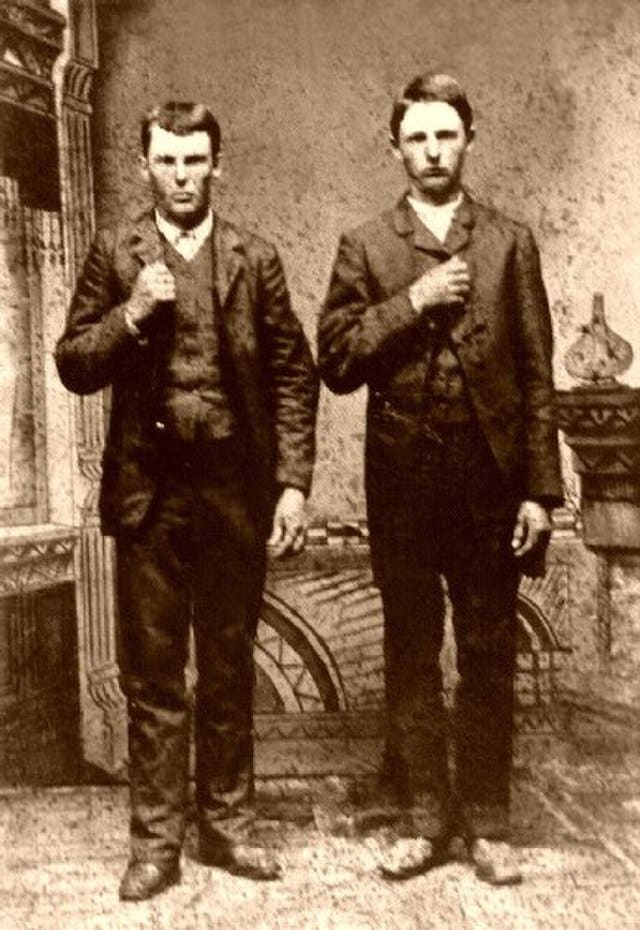
Jesse James: The Daring Outlaw of the American Frontier
Jesse James, often depicted with a gun in one hand and a sack of coins in the other, is among the most infamous names in the found in American folklore. Born in Missouri in 1847, James was more than just a robber; he was an emblem of the post-Civil War dissent and discontent. The volatile period following the war, rife with political upheaval, economic struggles, and social injustices, provides the perfect backdrop for the rise of this historic outlaw.
Jesse and his brother Frank initially fought as Confederate guerrillas during the Civil War. Their experiences during the conflict, particularly under the brutal command of “Bloody Bill” Anderson, shaped their later outlaw careers. Like many former Confederate guerrillas, the James brothers felt alienated and wronged by the victorious Union forces when the war ended. Their subsequent criminal activities, including bank and train robberies, can be viewed as acts of rebellion against a system they perceived as unjust.
Historical records, such as newspaper articles from the era and later biographies, offer a tapestry of tales concerning James, sometimes painting him as a ruthless criminal, other times as a modern-day Robin Hood. These records detail audacious heists, narrow escapes, and a complex persona that was as much a product of media myth-making as of actual deeds.
Jesse James’s life of crime came to a sudden end in 1882. Betrayed by a member of his gang, Robert Ford, James was shot in the back of the head in his own home, a violent end to a life marked by violence. Yet, his legend was only beginning.
Today, Jesse James is remembered for his crimes and what he symbolized in the wake of the Civil War. His story is intertwined with the narratives of a nation grappling with Reconstruction, the displacement of Confederate sympathizers, and the wild, often lawless spirit of the American West. While to some, he remains a symbol of defiance and rebellion, to others, he represents the darker underbelly of the American frontier. Regardless of one’s perspective, the legacy of Jesse James endures, immortalized in books, films, and songs that continue to captivate audiences with tales of the Wild West and its iconic outlaws.
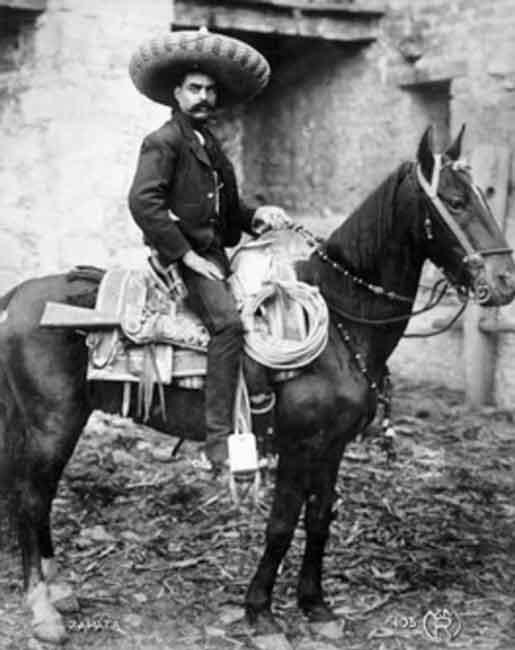
Emiliano Zapata: The Tireless Champion of Land and Liberty
Emerging from the intricate tapestry of Mexican history, Emiliano Zapata stands as a defiant figure who championed the rights of peasants in the face of grave injustice. Born in Morelos in 1879, Zapata was a revolutionary leader and a beacon of hope for countless agrarian communities. At a time when vast haciendas dominated the landscape, dispossessing small farmers of their ancestral lands, Zapata became an emblematic historic outlaw, defying the powerful elites to ensure justice for the downtrodden.
Zapata’s radical vision was encapsulated in his Plan de Ayala, a manifesto that vehemently opposed the policies of then-President Francisco Madero and demanded land reforms. This document, among other historical records, provides a poignant glimpse into the aspirations of the Mexican peasantry during a tumultuous period.
Written in 1911, it denounced Madero for failing to execute necessary land reforms and proposed the nationalization of lands taken by haciendas and their subsequent redistribution to the dispossessed.
As with many revolutionary figures, Emiliano Zapata’s crusade was dangerous. His staunch opposition to powerful landowners and political figures made him a marked man. Tragically, his journey came to a premature end in 1919 when he was ambushed and assassinated by forces loyal to then-leader Venustiano Carranza.
Yet, the spirit of Zapata, encapsulated in his famous slogan “Tierra y Libertad” (Land and Liberty), lived on far beyond his untimely death. His dream of a Mexico where land belonged to those who tilled it became a cornerstone of the nation’s agricultural reform policies.
Today, Emiliano Zapata’s legacy reverberates in the annals of Mexican history and the broader narrative of global social justice movements. His indomitable spirit, relentless pursuit of justice, and unyielding commitment to the cause of people experiencing poverty have enshrined him as one of the most revered figures in the pantheon of champions who rose against oppression. As both a revolutionary and a historic outlaw, Zapata remains a timeless symbol of resistance against inequity.
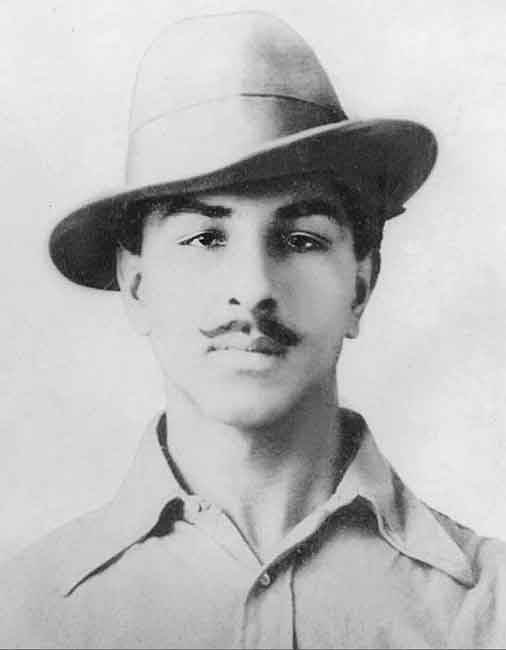
Bhagat Singh: The Fearless Martyr of India’s Freedom Struggle
During India’s fight for independence from British colonial rule, few figures shone as brightly as Bhagat Singh. Born in 1907 in Punjab, a young and passionate Singh quickly became the embodiment of resistance against the oppressive British regime. He was an unsettling force and a historic outlaw to the colonial establishment. Still, to millions of Indians, Singh was a hero who dared to challenge an empire and dream of a free and just India.
From an early age, Singh was deeply influenced by the freedom struggle. His participation in the Jallianwala Bagh protest at the tender age of 12 marked the beginning of his journey. However, it was his audacious act of protesting against the Simon Commission by throwing non-lethal bombs in the Central Legislative Assembly in 1929 that genuinely galvanized the nation. His intent was not to harm but to make the “deaf” hear.
Historical records, including numerous writings, letters, and essays penned by Singh during his prison days, offer profound insights into his revolutionary ideals, unwavering commitment to the cause, and deep-rooted disdain for the colonial yoke.
Despite his non-violent approach during the assembly protest, the British administration, already wary of Singh’s growing influence, seized the opportunity to put him on trial. Following a contested legal process, marred with accusations of bias, Bhagat Singh, along with his comrades Rajguru and Sukhdev, was sentenced to death. On March 23, 1931, the three young revolutionaries were executed by hanging in Lahore Central Jail in an act of grave injustice.
The execution was meant to serve as a deterrent to others. However, it had the opposite effect. Singh’s martyrdom ignited an unparalleled fervor among Indians, further intensifying the struggle for independence. With his iconic hat and fearless demeanor, the young revolutionary became the symbol of youth resistance against colonial rule.
Bhagat Singh’s legacy transcends time. His writings, mainly “Why I Am an Atheist,” reveal the young revolutionary’s profoundly introspective and philosophical side. Today, he remains one of the most celebrated figures in India, not just as a freedom fighter but as a beacon of resistance, courage, and the indomitable spirit of youth. His life and sacrifice continue to inspire generations, reinforcing the belief that tyranny, no matter how powerful, can never suppress the people’s collective will.
Echoes of Justice: The Undying Spirit of Rebellion
Throughout history, the tales of those who dared to challenge the status quo, defy oppressive regimes, and pursue justice against all odds have resonated deeply with generations. From the steppes of India to the vast plains of Mexico, from the rolling hills of Ireland to the dense forests of Brazil, these historic outlaws have etched their names in the annals of time, serving as enduring symbols of resistance and courage. Though set in different cultures and epochs, their stories share a universal message: the indomitable human spirit will always rise against tyranny.
In reflecting on these 15 iconic figures, we are reminded of the importance of those willing to fight for what they believe in, no matter the personal cost. Their sacrifices, often amid insurmountable challenges, underscore the transformative power of an individual’s commitment to justice. As we move forward into an era rife with its challenges and injustices, may we draw inspiration from these historical luminaries, understanding that every act of resistance, no matter how small, contributes to the more remarkable tapestry of justice and freedom. In the stories of these historic outlaw, we find hope, resilience, and the enduring belief that justice is always possible.

